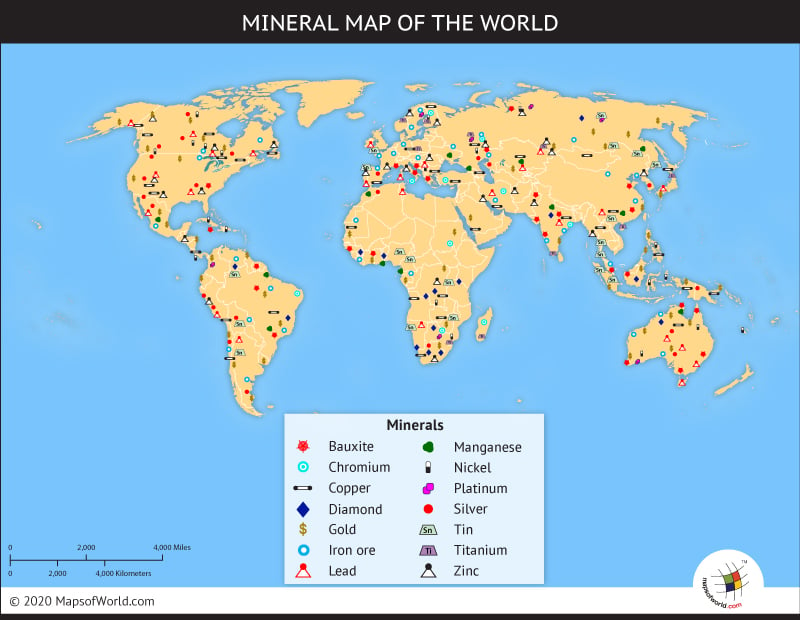Difference between revisions of "Earth Science 7- Europe and Iceland 5"
(→== Europe and Iceland ==) |
(→== Europe and Iceland ==) |
||
| Line 284: | Line 284: | ||
http://www.mapsofworld.com/images/world-mineral-map.jpg | http://www.mapsofworld.com/images/world-mineral-map.jpg | ||
| − | (http://www.mapsofworld.com/images/world-mineral-map.jpg) | + | (((http://www.mapsofworld.com/images/world-mineral-map.jpg))) |
'''Rock Types''' | '''Rock Types''' | ||
Revision as of 13:06, 26 February 2012
== Europe and Iceland ==

Latitude and Longitude Ranges
Europe:Latitude: Approx. 37.5 Degrees N. to 67.5 Degrees N. Longitude: Approx. 15 Degrees W. to 30 Degrees E.
Iceland: Latitude: 67 Degrees N. to 62 Degrees N. Longitude: 14 Degrees W. to 23 Degrees W.
Countries
Albania, Andorra, Austria, Azerbaijan (European), Belarus, Belgium, Bosnia-Herzegovina, Bulgaria, Croatia, Czech Republic, Denmark, Estonia, Finland, France, Georgia (European), Germany, Greece, Hungary, Iceland, Ireland, Italy, Kazakhstan (European), Kosovo, Latvia, Liechtenstein, Lithuania, Luxembourg, Macedonia, Malta, Moldova, Monaco, Montenegro, Netherlands, Norway, Poland, Portugal, Romania, Russia, San Marino, Serbia, Slovakia, Slovenia, Spain, Sweden, Switzerland, Turkey (European), Ukraine, United Kingdom, Vatican City
Bordering Oceans
For both=
Atlantic Ocean
North Atlantic
Arctic Ocean
Large bodies of water
North Sea, English Channel, Bay of Biscay, Mediterranean Sea, Sea of Azov, Caspian Sea, Norwegian Sea, Greenland Sea, Denmark Strait, Faza Bay, Barrents Sea, Caspian Sea, Celtic Sea, Irish Sea,
Large Rivers
Europe=
Volga, Don, Dnieper, Tagus, Lorie, Thames, Shannon, Rhine, Oder, Danube, Elbe,
Iceland=
Thjorsa, Jokulsa a Fjollum, Blanda, Lagarfljot, Skjalfandafljot, Hvita,
Elevation Range, highest/lowest points
Iceland=
lowest point: Atlantic Ocean 0 meters highest point: Hvannadalshnukur 2,119 m
Europe=
lowest point: Caspian Sea -28 m highest point: Mt. Elbrus 5,642 m
Climate Zones

Europe=
Cfb(Marine West Coast= warm summer, equally spread rainfall year round
Csa(Mediterranean)= dry, hot summer, frost danger in winter
Iceland=
Dwd(Hunid Continental)= very cold,dry winter, cool summer
Ef(Ice Cap) = Perennial ice
Major topographic features
Europe=
Mesta
Pyrenes
Alps
Kjolen Mts
Scandinavian Shield
Central Russia Upland
Ural Mountains
Caucasus Mts
Balkan Mts
Great Hungarian Plain
Dinaric Alps
Massif Central
Carpathian Mts
Iceland=

Vatnajakull Glacier
Myradalsjokull Glacier
Longjakull Glacier
Hosjakull Glacier
Drangojokull Glacier
Average monthly temperatures
Iceland=
high: 45.83 Degrees Fahrenheit low: 37. 08 Degrees Farhrenheit

Europe=
Cfb region: Paris, France
high: 58.5 Degrees Fahrenheit low: 47.41 Degrees Fahrenheit
Csa region: Athens, Greece
low: 71.75 Degrees Fahrenheit high: 56.58 Degrees Fahrenheit
Average monthly rainfall
Iceland=
Dwd region: Reykjavik: 68 mm
Ef region: Myvatn: 4.5 mm
Europe=
Csa region: Athens, Greece: 1.25 inches
Cfb region: Paris, France: 51.83 mm
Average monthly precipitation
Iceland: 66.52 mm
Europe:
Csa region: Athens, Greece: 1.25 inches
Cfb region: Paris, France: 55.08 mm
Factors that affect the Climate
Iceland has a dry and cold winter season and a cool summer. The majority of the major topographic features are glaciers. The southern and western regions of Iceland experience mild winter temperatures because of the warm waters of the Gulf Stream. The location and latitude of Iceland affect its climate. Iceland is located in the Northern Hemisphere and is near the Arctic Circle and North Pole. These are some of the reasons why Iceland is cold. The weather in Iceland is mostly influenced by the atmospheric depressions crossing the North Atlantic. These are called "Iceland-lows". The rainfall on the south coast of Iceland is quite high, while in the northern highlands the rainfall is quite low. Winter snowfall occurs mostly in the northern areas of Iceland.Iceland is low a pressure area, which may be the reason why thunderstorms are rare in Iceland.
Prevailing winds blow from the Atlantic Ocean to Europe. Europe is typically wet year round and has a dry summer season. Europe is in the Northern Hemisphere and so its location and latitude affect its climate. Europe's variation in vegetation probably is one of the reasons why Europe has a such wide range in climate. Its vegetation varies from ice caps to forest to grasslands. Part of Europe is next to a body of water and this masses of water probably affect the climate of Europe.Europe is both a high and low pressure area. The combination of both high and low pressures is probably the reason why throughout Europe the climate is typically the same. The climate of Europe is strongly affected by the Gulf Stream, because warms it warms the western region of Europe. The tornadoes in Europe also affect its climate.
'Geology'
Mining Resources
Europe: Uranium, Coal, Tin, Lead, Zinc, Titanium, Iron, Platinum, Oil, Copper, Bauxite, and Silver
Iceland: Oil, Tin, Coal, Lead and Diatomite

Minerals
Europe:
Italy: Analcime, Anhydrite, Andalusite, Mica, Dolomite, Magnesite, Sulfur, Chalcocite, Olivine, Augite, Pyrite, Limonite, Titanite Sicily: Analcime Spain: Anhydrite, Andalusite, Cinnabar, Pyrite Scotland: Mica Germany: Mica, Limonite, Calcite, Galena, Bismuth, Bornite, Ettringite, Cerussite, Mimetite, Titanite, Smithsonite, Cubanite Austria: Mica, Galena, Epidote, Titanite Finland: Mica Switzerland: Mica, Dolomite, Magnesite, Quartz, Beryl, Prehnite, Danburite, Titanite England: Fluorite, Calcite, Ankerite, Bornite, Hilgardite, Mimetite Luxembourg: Limonite France: Limonite, Calcite, Epidote, Chalcotrichite, Wardite Ireland: Calcite, Ettringite Sweden: Bismuth, Hausmannite, Molybdenite Hungary: Ankerite, Enargite Poland: Bornite Ireland: Calcite, Beryl, Ettringite, Natrolite Scotland: Prehnite, Staurolite Netherlands: Ferberite Norway: Epidote, Datolite Turkey: Orpiment
Iceland: Opal, Mesolite, Stilbite, Calcite, Aragonite

((( )))
)))
Rock Types
Europe:
Iceland: Just by knowing the physical features of Iceland, you know that the main type of rock there is Igneous, because of the large amount of volcanoes that are on the island. There are also a lot of hot springs on Iceland, which result from the emergence of groundwater that has passed through or near recently formed, hot, igneous rocks. The igneous rocks on Iceland are are formed when hot magma from volcanoes cools and becomes solid. An example of an igneous rock in Iceland is the Iceland Spar.
Links
[[1]]
[[2]]
Sources
http://www.worldbookonline.com/advanced/article?id=ar186660&st=europe
http://www.worldatlas.com/webimage/countrys/eu.htm
http://www.worldatlas.com/webimage/countrys/euriv.htm
http://www.worldatlas.com/aatlas/infopage/highlow.htm
http://www.worldatlas.com/webimage/countrys/europe/is.htm
http://maps.google.com/maps?gcx=w&q=europe&um=1&ie=UTF-8&hl=en&sa=N&tab=wl
http://www.srh.noaa.gov/jetstream/global/climate_max.htm
http://www.infoplease.com/ipa/A0001763.html
http://www.worldatlas.com/webimage/countrys/euland.htm
http://www.worldatlas.com/webimage/countrys/europe/iceland/isfacts.htm
http://www.weatheronline.co.uk/reports/climate/Iceland.htm
http://goscandinavia.about.com/od/icelan1/ss/weathericeland.htm
https://notendur.hi.is/oi/climate_in_iceland.htm
http://maps.howstuffworks.com/europe-vegetation-map.htm
http://www.weather.com/outlook/travel/vacationplanner/wxclimatology/monthly/graph/FRXX0076
http://www.weather.com/outlook/travel/vacationplanner/wxclimatology/monthly/graph/GRXX0004
http://www.weather-and-climate.com/average-monthly-Rainfall-Temperature-Sunshine,Paris,France
http://france-for-visitors.com/paris/guide/temperatures-and-rainfall.html
http://www.worldweatheronline.com/weather-averages.aspx?q=MVA
http://www.climatetemp.info/iceland/reykjavik.htmlw
http://www.woeurope.eu/reports/wxfacts/Isobars-on-surface-maps.htm
https://www.cia.gov/library/publications/the-world-factbook/geos/ic.html
http://www.infoplease.com/ce6/sci/A0824279.html
http://www.infoplease.com/dk/science/encyclopedia/rocks.html